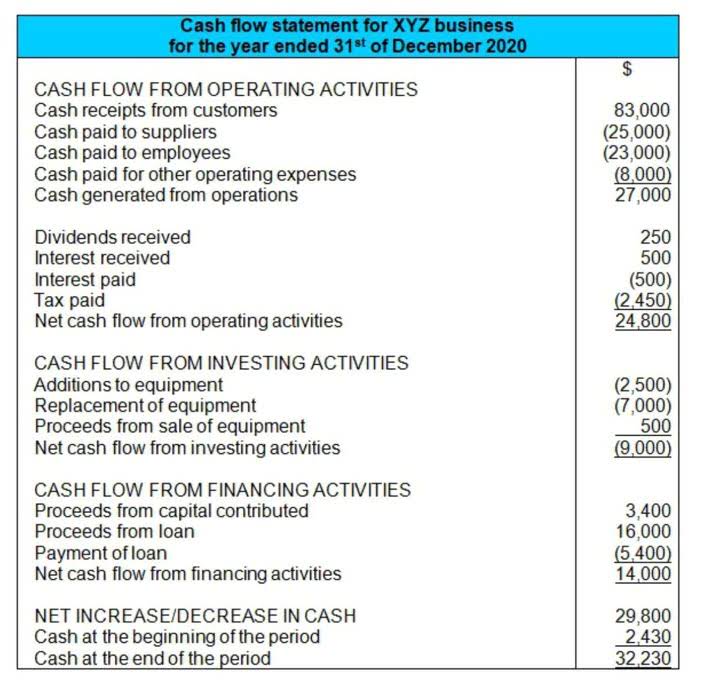
By storing these, accountants are able to monitor the movements in cash as well as it’s current balance. This means that the new accounting year starts with no revenue amounts, no expense amounts, and no amount in the drawing account. Accounts Receivable is an asset account and is increased with a debit; Service Revenues is increased with a credit. A preferred stock issue is another way for a company to raise cash for its business. This hybrid of a stock and a bond appeals to investors who want a steady dividend payment and protection of their capital from bankruptcy.
- The gain is the difference between the proceeds from the sale and the carrying amount shown on the company’s books.
- By following the expected normal balances, accountants ensure that financial statements accurately represent the financial position, performance, and cash flows of the business.
- When you make a debit entry to a liability or equity account, it decreases the account balance.
- Flows in and out of the capital account represent changes in asset value through investments, loans, banking balances, and real property value.
- An account with a balance that is the opposite of the normal balance.
- At the end of the accounting year the balances will be transferred to the owner’s capital account or to a corporation’s retained earnings account.
Which Country Has the Largest Capital Account?
In other words, it cancels out part of the balance of the related Normal Balance account. For example, the current account is immediately impacted when U.S. farmers sell wheat to Chinese consumers or when Chinese manufacturers sell computers to U.S. consumers. We will apply these rules and practice some more when we get to the actual recording process in later lessons. Double Entry Bookkeeping is here to provide you with free online information to help you learn and understand bookkeeping and introductory accounting.
Capital Accounts in Accounting
In conclusion, the concept of normal balance is a fundamental aspect of accounting that ensures accuracy, consistency, and reliability in financial reporting. By applying the principles of normal balance, businesses can maintain balance in their financial records and present transparent and meaningful financial information to stakeholders. By adhering to the expected normal balances, capital account normal balance accountants maintain the integrity and usefulness of the financial statements. Now that we have explored the relationship between normal balances and assets, liabilities, and equity, let’s move on to discussing the importance of normal balances in accounting. Paid-in capital is the total amount of cash that a company has received in exchange for its common or preferred stock issues.
Normal Balance and the Accounting Equation
In accounting, ‘Normal Balance’ doesn’t refer to a state of equilibrium or a mid-point between extremes. Instead, it signifies whether an increase in a particular account is recorded as a debit or a credit. A ‘debit’ entry is typically made on the left side of an account, while a ‘credit’ entry is recorded on the right. This account is a non-operating or “other” expense for the cost of borrowed money or other credit. Salaries Expense will usually be an operating expense (as opposed to a nonoperating expense). Depending on the function performed by the salaried employee, Salaries Expense could be classified as an administrative expense or as a selling expense.

The vast majority of global capital account transfers take place between the world’s wealthiest businesses, banks, and governments. Acquisitions of non-produced, non-financial assets create a deficit in the capital account. When a country’s residents, businesses, or government forgive a debt, their action also adds to the deficit.

Examples of Normal Balances

The current account deals with a country’s short-term transactions or the difference between its savings and investments. These are also referred to as actual transactions (as they have a real impact on income), output, and employment levels through the movement of goods and services in the economy. Now that we have defined the concept of normal balance, let’s move on to examining some examples to further clarify its application. The following example may be helpful to understand the practical application of rules of debit and credit explained in above discussion. Companies may opt to remove treasury stock by retiring some treasury shares rather than reissuing them.
Normal balances of accounts chart”” data-sheets-userformat=””2″:513,”3″:”1″:0,”12″:0″>Normal balances of accounts chart
- The BEA determines on a case-by-case basis if it counts as a catastrophic loss.
- The normal balance can be either a debit or a credit, depending on the type of account.
- When we’re talking about Normal Balances for Expense accounts, we assign a Normal Balance based on the effect on Equity.
- Based on the rules of debit and credit (debit means left, credit means right), we can determine that Assets (on the left of the equation, the debit side) have a Normal Debit Balance.
- This is an owner’s equity account and as such you would expect a credit balance.
- When a country’s residents, businesses, or government forgive a debt, their action also adds to the deficit.
- An example is a foreigner’s purchase of a U.S. copyright to a song, book, or film.